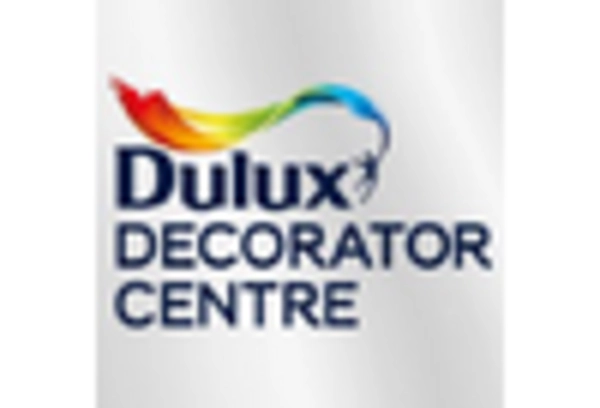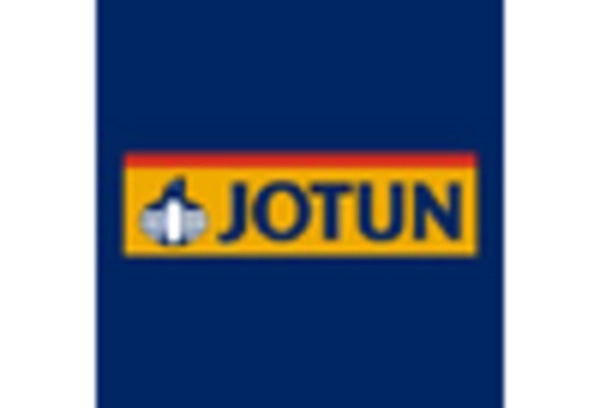Environmental Regulations
The Cement Paint Market is increasingly influenced by stringent environmental regulations that promote the use of eco-friendly materials. Governments worldwide are implementing policies that encourage sustainable construction practices, which include the use of low-VOC and non-toxic cement paints. As a result, manufacturers are adapting their product lines to meet these regulations, thereby enhancing their market competitiveness. The shift towards environmentally responsible products is expected to drive the demand for cement paints, as consumers become more conscious of their ecological footprint. In 2025, the market for eco-friendly cement paints is anticipated to expand significantly, reflecting a broader trend towards sustainability in the construction industry. This regulatory landscape presents both challenges and opportunities for the Cement Paint Market, as companies innovate to comply with these standards.
Technological Innovations
Technological advancements are playing a crucial role in shaping the Cement Paint Market. Innovations in formulation and application techniques are enhancing the performance characteristics of cement paints, making them more appealing to consumers. For instance, the introduction of advanced polymer additives has improved adhesion, flexibility, and weather resistance, which are essential attributes for exterior applications. Additionally, the development of spray application technologies has streamlined the painting process, reducing labor costs and time. As these technologies become more prevalent, they are likely to attract a broader customer base, including DIY enthusiasts and professional contractors. The Cement Paint Market is expected to benefit from these innovations, as they not only improve product quality but also expand the range of applications for cement paints.
Growing Aesthetic Preferences
The Cement Paint Market is witnessing a shift in consumer preferences towards aesthetically pleasing finishes. As homeowners and builders increasingly prioritize design and visual appeal, the demand for decorative cement paints is on the rise. This trend is particularly evident in residential projects, where unique colors and textures are sought after to enhance the overall aesthetic of properties. In 2025, the market for decorative cement paints is projected to grow significantly, driven by the desire for personalized and visually striking interiors and exteriors. Manufacturers are responding to this trend by offering a wider variety of colors and finishes, thereby catering to diverse consumer tastes. This growing emphasis on aesthetics is likely to propel the Cement Paint Market forward, as it aligns with broader trends in home improvement and renovation.
Rising Construction Activities
The Cement Paint Market is experiencing a notable surge due to the increasing construction activities across various sectors. As urbanization accelerates, the demand for residential, commercial, and industrial buildings rises. In 2025, the construction sector is projected to grow at a compound annual growth rate of approximately 5.5 percent, which directly influences the cement paint market. Cement paints are favored for their durability and cost-effectiveness, making them a preferred choice for builders and contractors. This trend indicates a robust market potential, as the need for high-quality finishes in new constructions drives the demand for cement paints. Furthermore, government initiatives aimed at infrastructure development are likely to bolster this growth, creating a favorable environment for the Cement Paint Market.
Increased Awareness of Durability
The Cement Paint Market is benefiting from a heightened awareness of the durability and longevity of cement-based products. Consumers are increasingly recognizing the advantages of cement paints, which offer superior resistance to weathering, fading, and wear compared to traditional paints. This awareness is particularly pronounced in regions with extreme weather conditions, where the performance of exterior coatings is critical. In 2025, the demand for durable cement paints is expected to rise, as both residential and commercial property owners seek long-lasting solutions for their painting needs. The emphasis on durability not only enhances customer satisfaction but also reduces maintenance costs over time. As a result, the Cement Paint Market is likely to see sustained growth, driven by this focus on quality and performance.

















Leave a Comment